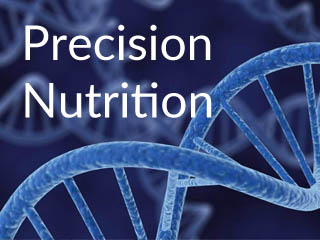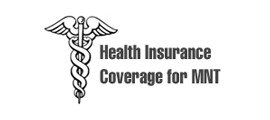Diabetes is a disease involving dysregulation of insulin and blood glucose. Type 1 diabetes is typically found in children, hence the name juvenile diabetes. It’s an autoimmune type of disease where the pancreatic cells get destroyed and can no longer produce enough insulin. Insulin is a hormone secreted by the pancreas in response to blood sugars. As you eat a meal, your blood sugars begin to rise. This triggers a response in your brain to take this sugar (glucose) and mobilize it into the cells to create energy. If there isn’t enough insulin to “unlock the cell membrane door” then the blood sugars can continue to rise and cause damage and even death.
In type two diabetes, the individual may still have a generally healthy pancreas but for some reason the “unlock” signal at the cell membrane is disfunctioning. It’s known as insulin resistance. The receptors that detect the insulin are “tired” from too much insulin due to excessive food, especially in the form of simple sugars and toxins, that they simply aren’t working at their best. The blood sugar wont be able to get into the cells for energy and they will continue to rise. Notably, excessive blood sugar that can’t be utilized by the cells for energy will also be stored as fat.
Type 3 diabetes is a form of diabetes that actually involves both type 1 and type 2. Many people with type 2 will fall into type 1 as they age as the pancreas can no longer keep up with the dysregulation of blood sugars. Autoimmune disorders may also begin in later years in life that effect the pancreas. Type 3 is also known as a form of Alzheimer’s. The brain requires blood sugar for it to function. It is the primary fuel for the brain, organs and muscles. New research now suggests that insulin works on the brain too. The brain can suffer from insulin resistance just as muscle cells can.
With the rise in blood sugars, you also have a rise in triglycerides. Triglycerides are like the car that shuttles blood sugars to the parts of the body in need of energy. Unfortunately, excessive triglycerides (a form of fatty acids) can create excessive oxidation. Think of oxidation as the browning of the apple you just took a bite of. It damages cells. It’s important for keeping byproducts, viruses, and bacteria at bay. It’s part of the regeneration of cells. BUT, if it is in excess, you can have too much damage to cells and the body can not repair itself fast enough leading to further disruption of cellular metabolism, increased risk of DNA mutations leading to more malfunction and illness that may include heart disease, cancer, autoimmune, etc.
What can you do about it?
Diet and lifestyle are still the number one factors in reducing side effects and managing the disease. Type 1 will require insulin injections whereas, type 2 and 3 can be managed through diet and lifestyle alone. As I noted earlier, if the disease progresses, type 2 and 3 may require insulin injections if the pancreas becomes dysfunctional.
Low inflammatory, low glycemic eating is one of the most effective ways to keep diabetes in control. You do not need to go on an extreme diet in order to heal and manage diabetes. Watching blood sugars and keeping dietary sugar and refined foods out of your diet are extremely important. Toxins can also contribute to more oxidation and damage to cells, so eating more wholesome foods instead of highly processed convenience foods is best. Choosing foods low in glycemic index and high in antioxidants and fiber will help you manage your blood sugars more successfully. Remember, diabetes is an inflammatory (oxidative) disease. Focus on high antioxidant foods. This also includes healthy fats.
Strive for balanced fats, moderate protein, and a variety of fruits, vegetables, nuts, seeds, legumes, and the occasional grain and dairy. The reason why I caution people with grains and dairy is because in America, they are the highest food consumed and tend to be in processed form. This means the protein is denatured and they tend to carry a lot of omega 6 oils. Soy, corn and canola are high in omega 6 oils and used to make foods shelf stable. We need a more balanced intake of fats consisting of a 2:1 ratio of omega 6 oils to omega 3 oils. Omega 6 oils in excess become pro-inflammatory. Omega 3 fatty acids, such as those found in grasses, sea vegetables, fatty fish, grass raised animals, are anti-inflammatory.
So, if your doctor tells you to eat more “fiber” because it slows down blood sugars and helps you feel fuller on a smaller portion, choose whole fruits and vegetables instead of grains. Controlling portions is extremely important. Eating whole foods doesn’t mean you don’t have to pay attention to portions. As a diabetic, you MUST be responsible in keeping your blood sugars in check. Vegetables, protein and fats cause a very low spike in blood sugars. Starchy vegetables, grains, fruits, legumes will cause a noticeably larger jump in blood sugar. Refined foods such as candy, white breads, cookies, pies, etc will definitely shoot your blood sugars through the roof.
As you begin to measure your blood sugars, you may even notice that certain fruits can cause bigger spikes in blood sugars than others. This is where you can start to examine how you combine your foods and adjust portions to meet your blood sugar needs. Adding fats and protein to a higher glycemic food can slow down the rise in blood sugars. If you want to eat an apple, perhaps put natural peanut butter on it. You should be eating far more green vegetables than fruits. Meeting with a nutrition professional to provide low glycemic, low inflammatory menus is recommended.
You may be wondering what “glycemic index ” is. It’s a measure of how quickly blood sugars rise upon eating that particular food at a particular portion. I recommend you pull up a list online and print it out so you can reference the foods, but ultimately, you need to test your blood sugars regularly. Stress will also cause spikes in blood sugar. Exercise helps pull sugars into the cells. Exercise actually acts like insulin in the body. This is why Type 1 diabetics need to be careful with exercise because it can drop their blood sugars too low along with their insulin medication. Type 2 and 3 typically don’t have to worry about blood sugars dropping too low with exercise. CHECK BLOOD SUGARS REGULARLY. They will tend to be higher in the morning because your liver will kick out blood sugar after your fasting sleep state.
Caution: be careful of putting too many high sugar items together in one meal. For example, high fiber cereal with a banana and skim milk is a HUGE sugar rush in the morning. Try a veggie omelette with a piece of fruit instead. You may also do well with higher fat alternative milk options like almond or coconut milk. Healthy fats are more your friend than grains, but remember to watch portions. Greatly limit starchy vegetables (potato) and grains to one serving with your lunch or dinner meal. One serving of grain = 1 slice of bread. One serving of starchy vegetable = 1/2 medium/large potato. Carbs add up fast, so learning to control portions will allow you to eat foods you enjoy without causing more damage to your health. People tend to do well on a paleo low carb diet plan.
A great practice is to start keeping a food journal so you can become aware of how much or how little vegetables you are eating, how much grain or dairy you are eating, whether or not you are taking in antioxidant rich foods, and especially how balanced your diet truly is. Set goals based on your food plan that was created between you and your nutrition specialist. Discuss food issues and make adjustments as appropriate. You must take responsibility for your health. Take advantage of those around you that are here to help guide you along your health journey.
For low glycemic low inflammatory food planning, contact me! www.eatwellandbeyond.com




 Providing nutritional therapy and lifestyle education for disease prevention and weight management....
Providing nutritional therapy and lifestyle education for disease prevention and weight management....